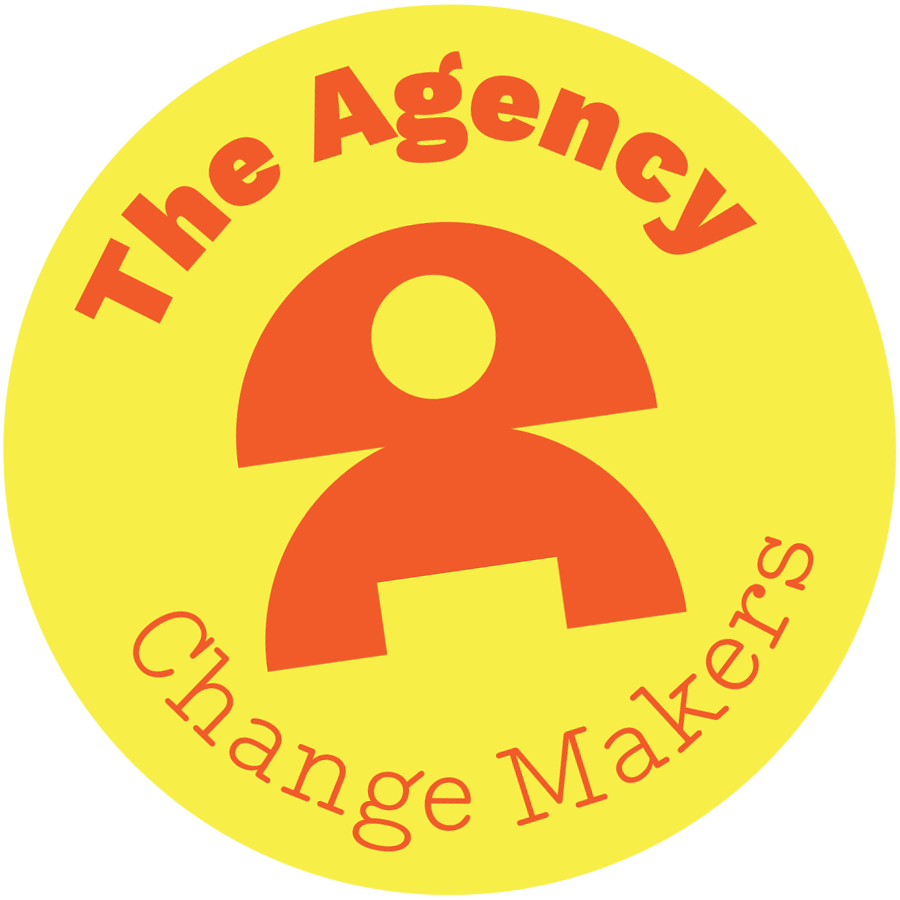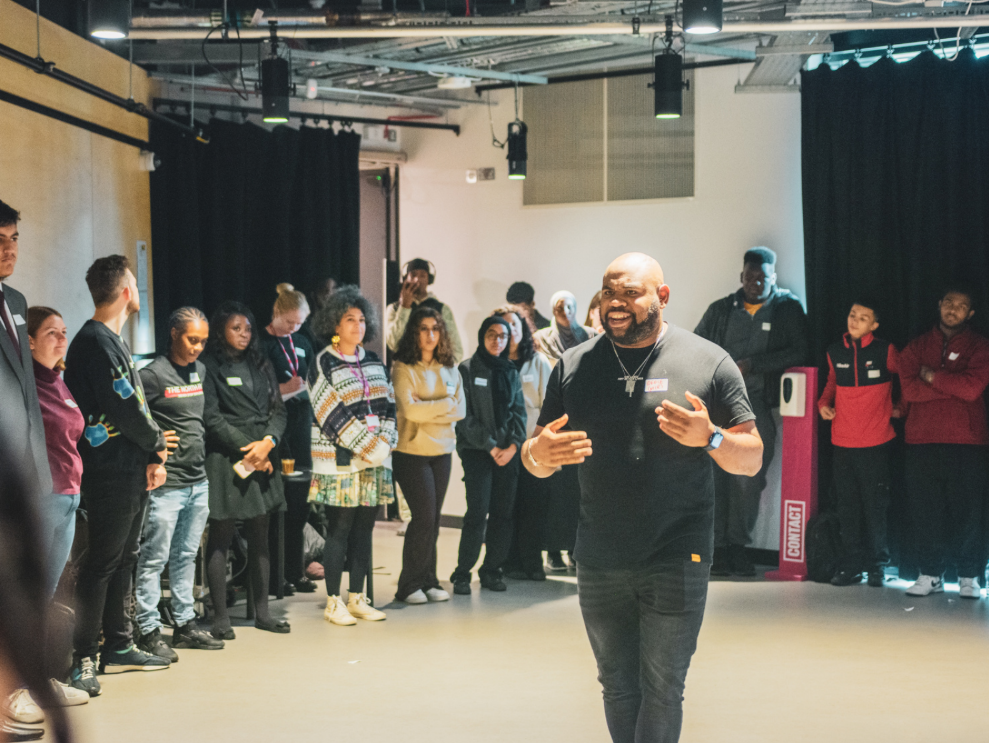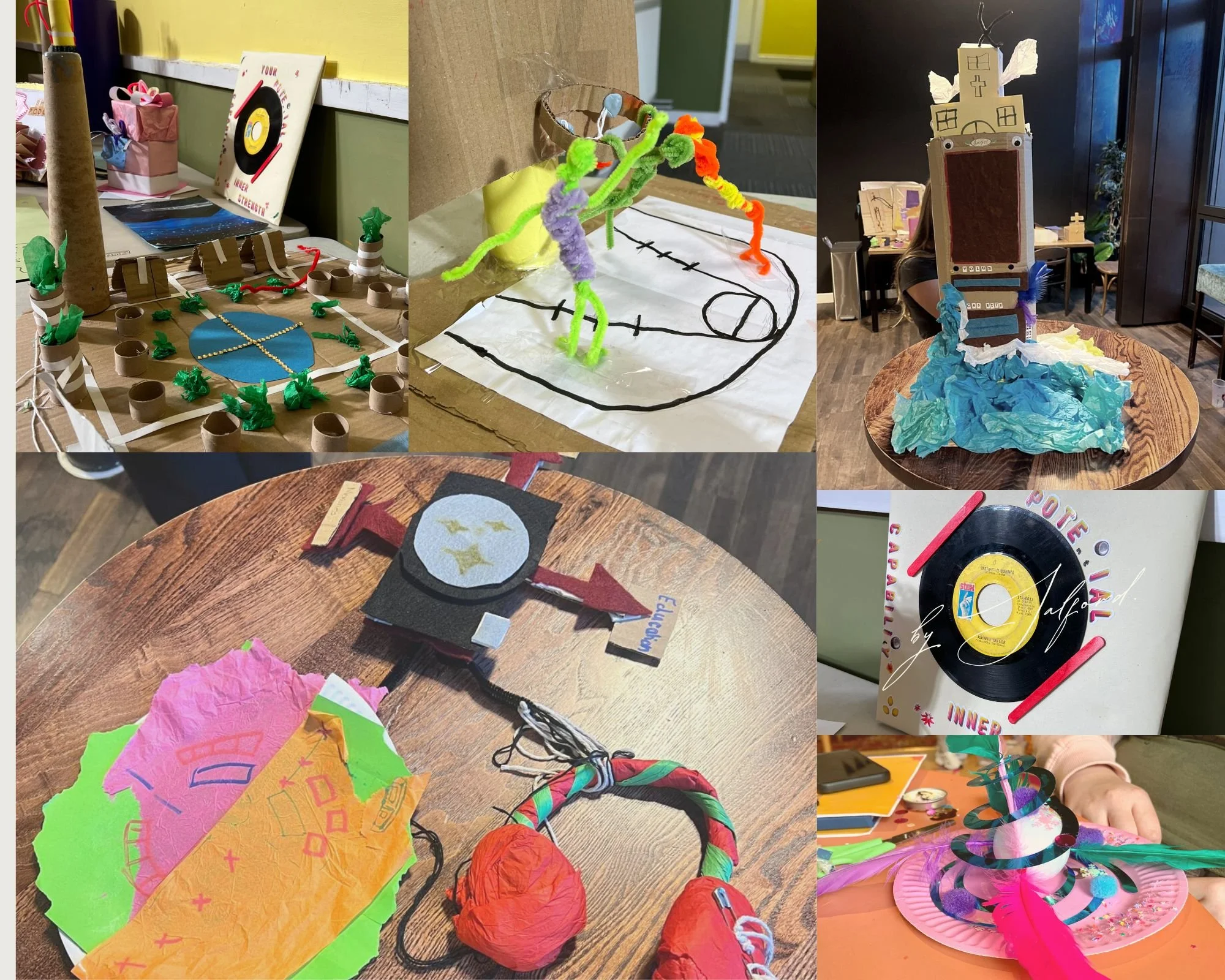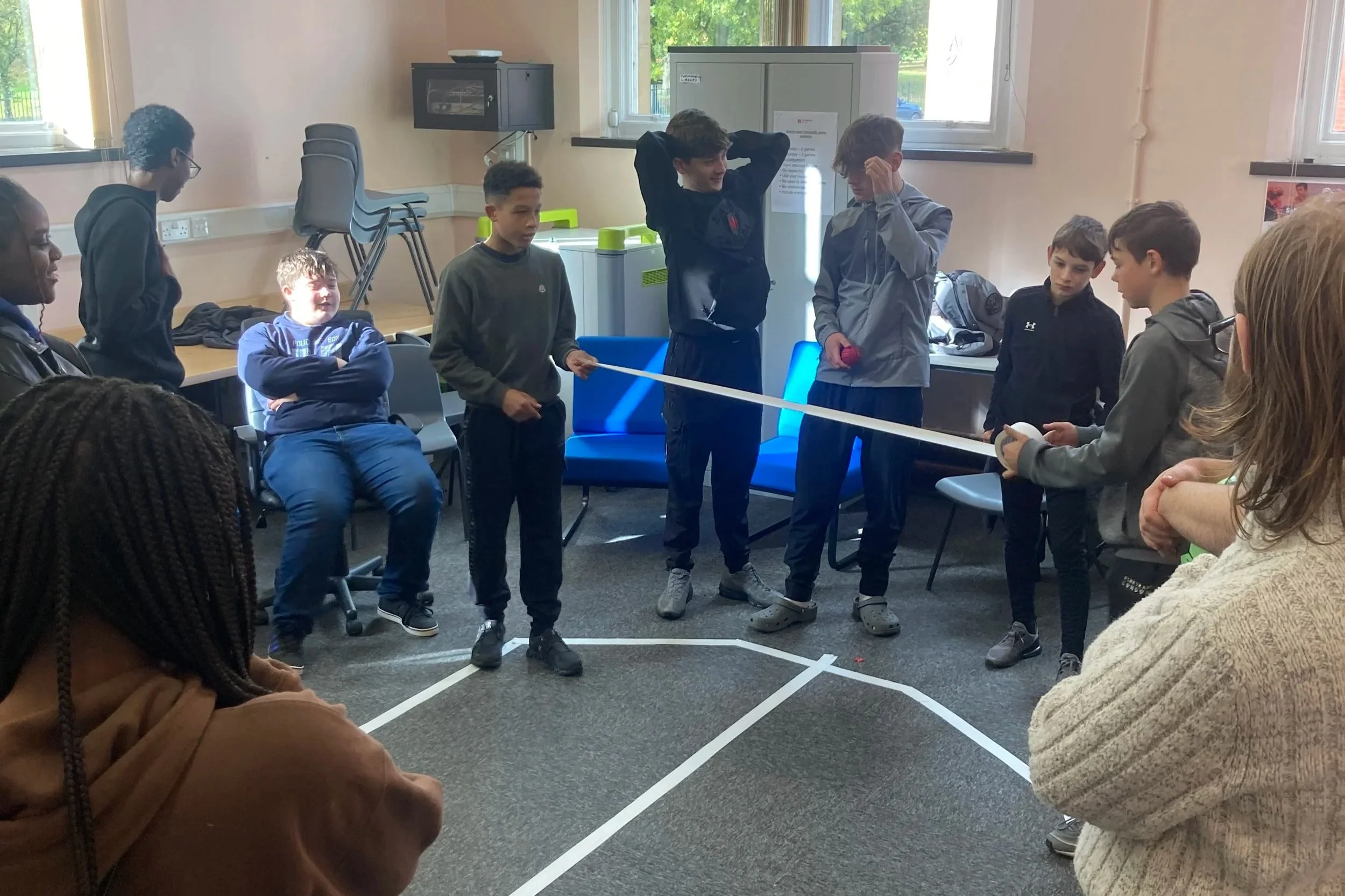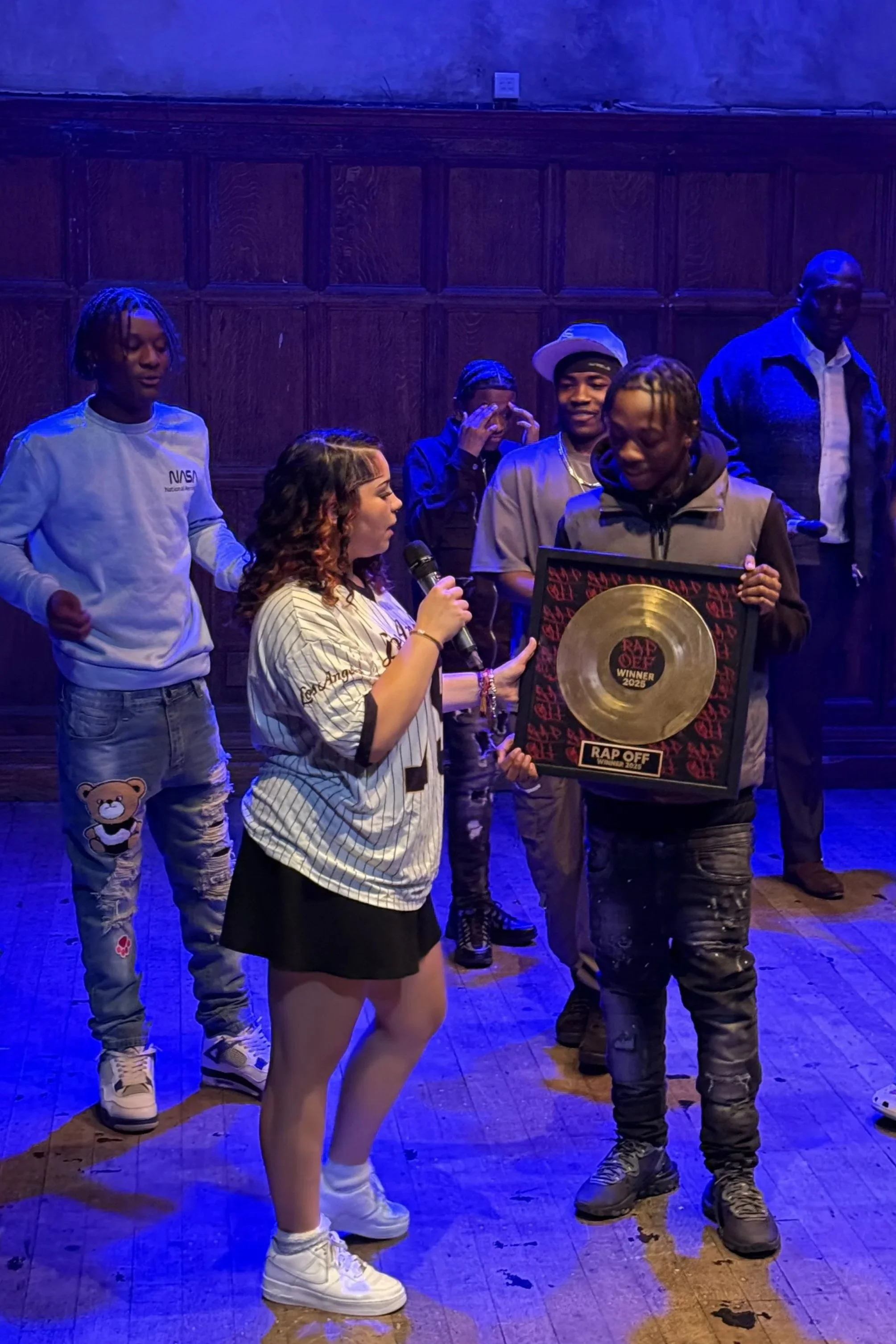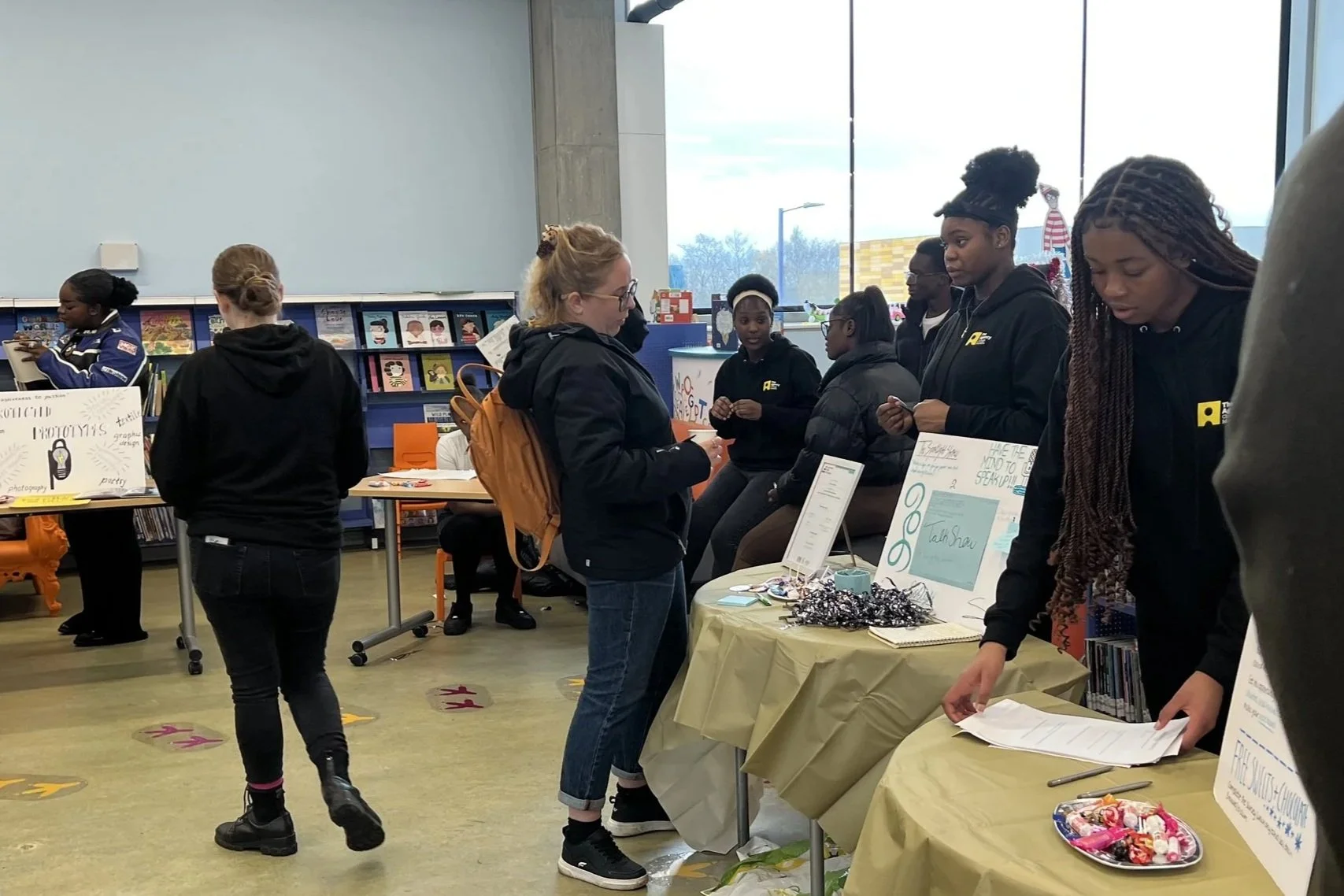Beyond The Agency: Lifelong Tools for Change and Creativity - An Evaluation by Reece Williams
Between 2014 and 2022, I had the immense privilege of working on The Agency project as a Peer Mentor and Project Producer. The role, one of my career highlights, gave me the chance to learn a new methodology, work with some exceptional young people and to ground myself in the Moston and Harpurhey communities.
For ten years prior, I’d established myself as an artist (poetry not painting, by the way), facilitator and designated big brother. As a poet, I’d performed locally, nationally and internationally and this organically developed into facilitation. For anyone who works in participation, you’ll know it’s pretty much standard that you’ll support your participants beyond the confines of the creative craft you’re exploring with them. I’m guessing these are the reasons I was recruited for the Agency.
I remember being approached about the role by a mentor of mine, Danny Fahey (who had worked on the project in the year before) and leaving the conversation feeling like I’d been recruited to join a secret society. I’d heard the words ‘Agency’ and ‘change’ and ‘territory’ and ‘mobilisation’ but couldn’t fully grasp what they meant in the context of the project.
I thought that the training would make it all land in place neatly. I was wrong! Kate and I left the training with Danny feeling like we’d been inducted into The Matrix. I should say that this feeling is not at all a reflection on Danny, who facilitated a brilliant induction. It reflected how new The Agency methodology was. A lot of Marcus Faustini’s (Agency creator) manual was in Portuguese and so hadn’t been translated yet. It was also written for a specific social context, relied on theories that are rooted in radical theatre practice and comes from a language that is deeply philosophical.
If you had told me after that training session that The Agency would be so instrumental to how I work as an artist now, I probably would have called you a liar.
The Agency Way
The Agency produces amazing results because it requires a staff team that embraces its unique way of working. The Agency project delivery team consists of a Lead Facilitator (I worked under the phenomenal Kate Bradnam), Peer Mentor (myself) and Project Manager (shout out to Steve Vickers and Olivia Lee), plus Project Producers (who work on Cycle 2 of the Project and are often the Lead Facilitator and Peer Mentor).
These roles are all essential in making the project happen and it is extremely collaborative. There’s something about the methodology and the centrality of both territory (or community) and agency (ability to influence, shape or change something) that means that the project team and the Agents grow both together and closer.
It’s quite an unusual experience to be writing a reflective case study as a former Peer Mentor and Project Producer for The Agency because, typically, I tend to think of case studies as a way for us (the professionals that deliver the project) to reflect on the impact the projects we deliver has had on those that have engaged with our work (the participants). Case Studies present us with the opportunity to consolidate our learning and to share that learning with our peers, to replicate areas of delivery that worked and to detail the impact that the work has had on individuals and communities1. If I was to dig a little bit deeper on the reasons why I haven’t previously given much attention to exploring the impact that projects like The Agency have on professionals, the reasons could be multiple.
We’re used to making the case for funding for the arts and culture sector in terms of the ways it enriches the lives of participants, reduces the inequalities they experience (or at least attempts to!) and addresses social issues (youth violence, poor educational attainment, mental health etc). It seems, therefore, most appropriate to capture this data from those who have benefited from the activity.
It may also be the case that, particularly when thinking of organisations and projects which have a clear methodology, we can easily articulate what is done, why it is done that way and what it achieves and so thinking about the practitioners is a secondary thought.
It could also be the case that practitioners, like myself, see so much value in the work that we do as being directly linked to the lives that are changed as a consequence. We don’t often have the time to sit down and ask ourselves “How has this project changed me?’. Maybe we’ve never been asked that question or been asked it enough.
So, in a sense, I could begin my personal reflection on the impact of The Agency on my life and work as a creative by positing that being invited to write this case study has already challenged me to think differently about what case studies are and how they help us understand the impact of a project on all its stakeholders.
In terms of the more in-depth exploration of how The Agency has changed me as a practitioner, I thought it would be fitting to reflect on how The Big Five have become integral to how I create as a poet, musician and theatre-maker.
The Methodology
The Agency is split into two cycles. Cycle One is very philosophical and, in a nutshell, is where The Agents develop their idea for change in their community. The cycle concludes with them pitching their idea to an independent panel. Cycle Two is where they work alongside a Project Producer to make their idea happen.
The Cycles are shaped so that the Agents develop ideas which are robust, rooted in a personal, genuine desire for change and have taken on board consultation from the local community. In theatre terms, we might call it Research and Development.
When I started The Agency, great importance was placed on the Big Five, that is, the first five weeks of Cycle One. I’ve learned that this is probably because these are the foundations of how ideas are formed, but it also speaks to the personal qualities required of change-makers. Selflessness. Personal desire. Commitment to collaboration. Curiosity. Resilience. Adaptability. All of these qualities are refined in the first five weeks of the programme.
I’ll do my best to break down the Big Five and delve into the times when they have given me lightbulb moments in various creative situations.
The Compass
Compasses made by Agents in Manchester and Chester.
To find direction
We must know our own north point.
Let Desire lead us
The Compass is the first (and arguably the most important) tool that we introduce to Agents. It’s a way of helping them to tap into what drives them as people (Desire), the territory they hope to change for the better (Territory), ways that they can bring about change (Form) in ways that excite them. All of this brought together, creates an Idea.
I’ve seen first-hand the power that a genuine, heart-held desire can have on a young person. Agents who started the project with no idea of what they would like to (or were capable of) achieving, bursting into life when that desire becomes crystalised in their minds.
I can also speak about the impact the Compass has had on me as an artist. The first year that I worked on The Agency, I created a Compass. The desire I highlighted was ‘To tell stories that make people feel differently about my community and the people in it’. My desire wasn’t exactly a revelation to me, having been a poet since my teenage years.
Writing my desire down in a clear sentence for the first time, however, did give me a different kind of understanding of myself as a practitioner. I learned that poetry wasn’t the only way I wanted to tell stories. I wanted to create music. I wanted to tell jokes. I wanted to create films. I wanted to connect with others who have this desire, too.
The Compass and, Desire, became the driving force behind my debut collection of poetry and my first one-man theatre production, This Kind of Black. I used the Compass to help me explore the kinds of stories I want to tell about my community (territory). It gave me an anchor when I didn’t know what I needed the poems to be about, or when I was struggling to write with nuance. It helped me to meaningfully explore what it meant to be a custodian of the stories of my community.
The role of the Compass is also reflected in my work as a (part-time!) stand-up comedian. Knowing that my Desire is a constant gave me confidence to stand up in front of 300 people at HOME in Manchester and deliver a set which reflected on the peculiarities of being a second-generation Jamaican living in Manchester. I was able to tap into humorous stories that shared the breadth of my life experiences in a way that encouraged the audience to laugh, but also reflect, on identity.
2. Inventory
It’s more than a list
It’s an inventory.
Items of mind, named.
The biggest reflection I can give on the impact of the inventory on my artistry is to say that I would not have written my collection of poetry or created my one-man-show without the inventory. When I first got the idea for the collection, I opened up a note on my phone and started to create an inventory of all of the different forms of poetry (haiku, lune, limerick, eintou, etc.) that I could possibly use for my collection. I then started to inventory all the different stories that I wanted to tell (the time I got kicked out of class, the time I learned about how important the barbershop is, the memories I have of being in the back seat of my Dad’s BMW as a child). I then made an inventory of the moods I wanted the collection to evoke.
Using these three distinct inventories, I was able to create simple, but clear poem prompts for myself. And these inventories (and by extension, poem ideas) ran into 106 poem ideas in total! As someone who really thrives on the creative process as a way of staving off writer’s block, I never once felt like I was struggling with ideas.
The inventory gave me power as the ultimate inventor of my poems and the collection. It wasn’t a series of lists, it was an inventory, it was a way of distilling the broad thoughts I had into something that could become interconnected.
I’m working on a new and exciting creative project (can’t tell ya what it is, just yet, sorry) and at the heart of its developments to date is the inventory.
3. Maps and networks
Maps and Network Session at The Agency Bolton. Agents are creating a map of Farnworth by taping on the floor.
Chartering new paths
By marking past boundaries.
Route ahead, clearer.
When you are part of the diaspora, maps are important. Maps help us to figure out where we came from (literally and figuratively), they help us to make sense of who we are in relationship to our surroundings, and they help us to discover ways that we can make our locality a better place because of how we respond to its needs.
When I was creating my one-man show, I created a massive literal map of the half-mile radius of Moss Side where I spent most of my time as a child. The map included places I felt safe in, places I wasn’t allowed to (or supposed to go), places where I spent my money (Alvino’s patty shop won, guys) and places that marked poignant memories in my childhood.
I shared this map with the Director of my show, Matt Fenton, and he asked me to take him on a tour of my map. It massively helped him to understand the world I grew up in.
This became key for me to create the world of my show, which in my humble opinion, is the building block of any story. Doing the mapping exercise gave myself and my creative team loads of ideas of how to create the world using my physicality, text but also thinking about lighting and video projections.
Most of the positive feedback I’ve received on the show in some way reflects on the world that I present on stage. That, I owe to Maps.
4. Monsters and Avatars
The sum of my parts,
Enlarged because of a net
Work of avatars.
To call any solo theatre performance a one-person show is probably a misnomer. To make impactful work requires the input of several perspectives but also expertise, too. My show was no different.
I knew early in the production what my limitations were. I don’t make music. I’m not a natural with stage movement and I can’t draw to save my life. But I knew that the world that I wanted to create ought to be populated with rich sound, striking movement and stunning visuals.
This is where networks and avatars came into play. I need to build a team. My director and I spent some time thinking about what the respective roles of sound designer, lighting designer, projection artist and movement director should be and then thought about the people in our networks who would do a stellar job in helping us to create the world of the show.
We brought together a team that we knew would gel, with myself and the director as the trailblazer and the other team members assuming all kinds of other avatars - questioners, collaborators and practical people, too.
Everyone knew their role and how it would contribute to the end goal of making a stunning show and I’d like to think that showed in the quality of work we created together.
5. Festival of Ideas
My idea shared,
aloud, becomes ours when
room is left for yours.
The first time I presented the show in Manchester, we sold out all four performances. I think a large part of this relates to the fact that I’d been talking about the show to anyone that would listen for about 18 months beforehand.
The festival of ideas is about presenting your idea to the community and being open to feedback, leaving space for your idea to develop. I shared individual poems from the show at lots of open mic events in the run up to the show to get a sense of how the community felt about the poems. I learnt that some poems were quite dense and so needed to be delivered with a particular weight and emphasis. I learnt that some of the poems’ orders needed to change so I could take the audience on a journey.
I also took the opportunities to connect with other artists in the city who had created solo work. This gave me so much insight and perspective on the work I wanted to create.
The result? A show which has been presented all over the country. Rich post-show discussions about the themes and ideas of the show, more thought on how I can continue the legacy of the show and where I want to go next as an artist.
Manchester Agents presenting their projects to public during the Festival of Ideas.
When I started my journey with the Agency, I didn’t expect the tools we share with Agents to become so integral to my own practice as a creative but I’m beyond grateful that it has.
It’s impossible for me to initiate a new project idea (creative or otherwise) without going back to at least one of the Big Five. I know that I’m not ready to talk about my ideas with others until I have reflected on how the idea I’m developing is connected to my desire. I know that my idea isn’t full enough until I have inventoried. I know that my idea isn’t grounded unless I’ve explored the community that it is made with and for.
The tools have been transformational for my process and are go tos when I’m embarking on new creative journeys. It’s not an exaggeration to say that the tools are just as effective when applied to making art as they are when applied to making change in communities.
I’m seeing the methodology work for others too. I introduced the compass and inventory to another artist that I’m mentoring. He’s a leading grime MC making his first solo theatre show. I asked him to make a compass and he asked me what that’s got to do with making theatre or grime. I insisted he went with it. I’m glad he did because It helped him to realise the story he wants to tell. It also made him realise he needed to interact with lots of different forms of theatre, so he’s now immersed himself in the world of theatre. Intuitively he’s started to inventory the story he doesn’t want to tell.
He used all of this to develop his idea, pitch it to a partner organisation and now he has a seed commission to produce and present his show.
Even though I no longer work on The Agency as a Peer Mentor, I continue to see the impact of its methodology in my work. I’m excited to see how it will continue to shape the practice of the next wave of facilitators to come.
Enjoyed this read? This is the second evaluation piece for 2024-2025. Read the previous evaluation here and keep an eye out for more!